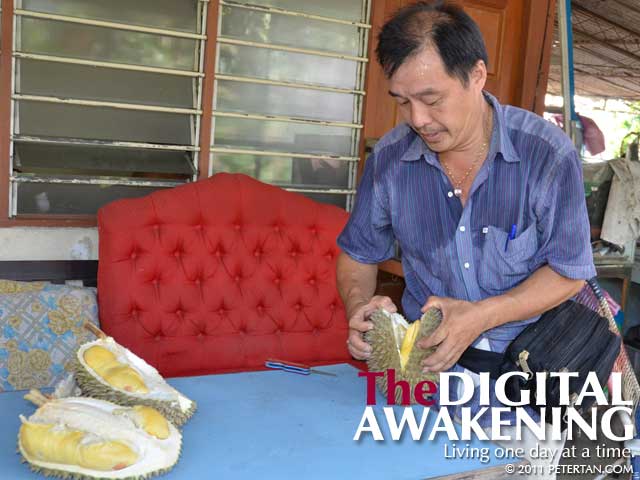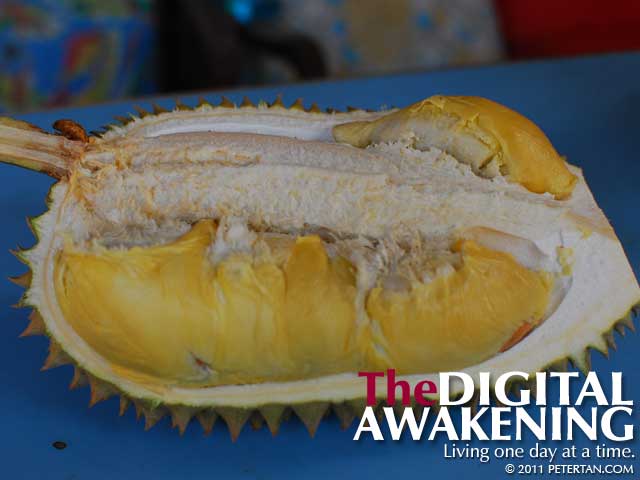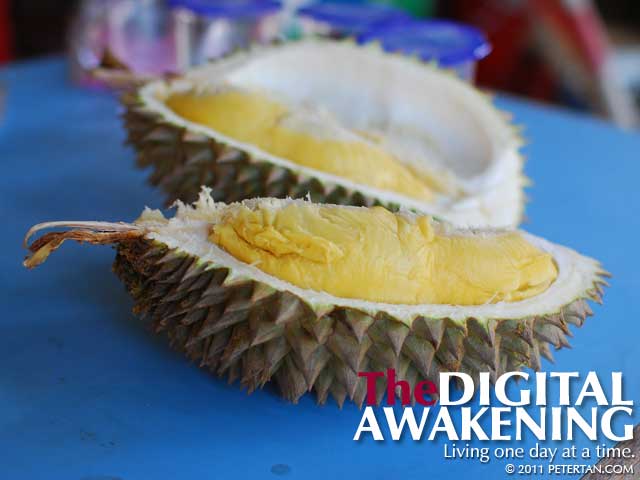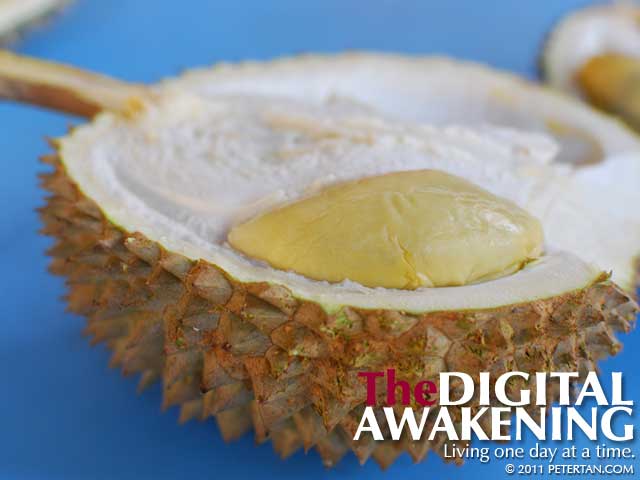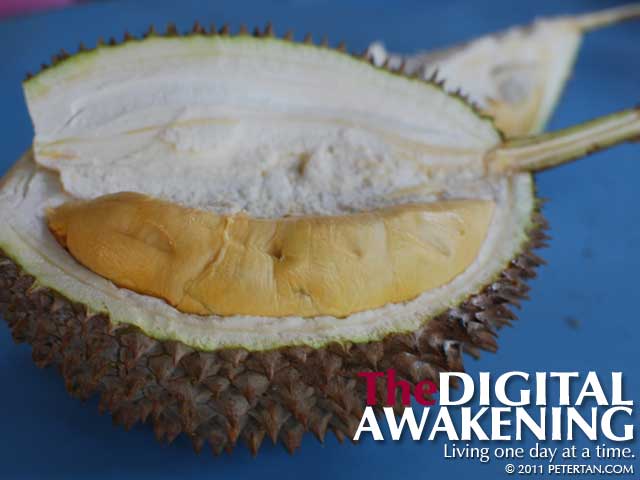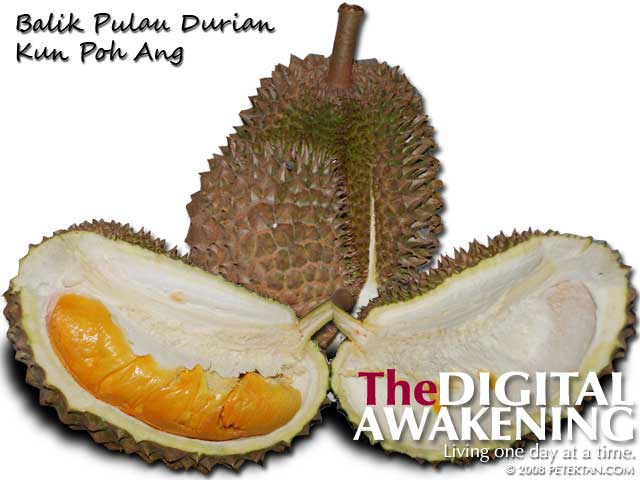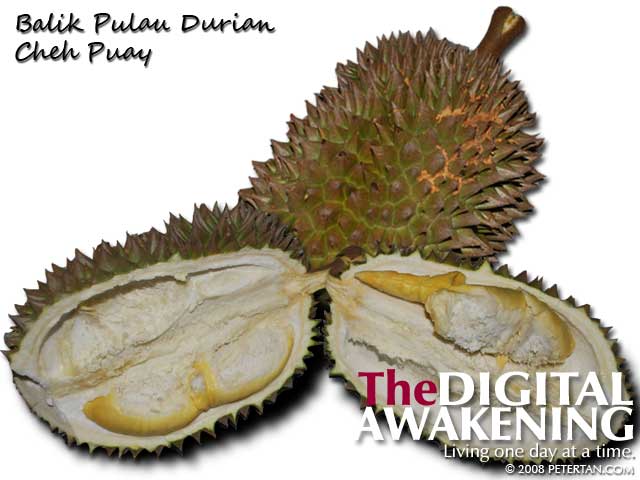Our recent trip to Penang was to feast on durians, this being the season for it, and to spring clean my apartment. I had engaged two cleaners to mop and help me clear some of the unwanted items. The last time the apartment was cleaned was two years ago. The floor was thick with dust, as was everything else. The five hours of cleaning resulted in ten garbage bagful of things that I no longer have any use for. The next trip will be for packing the remaining items in boxes.
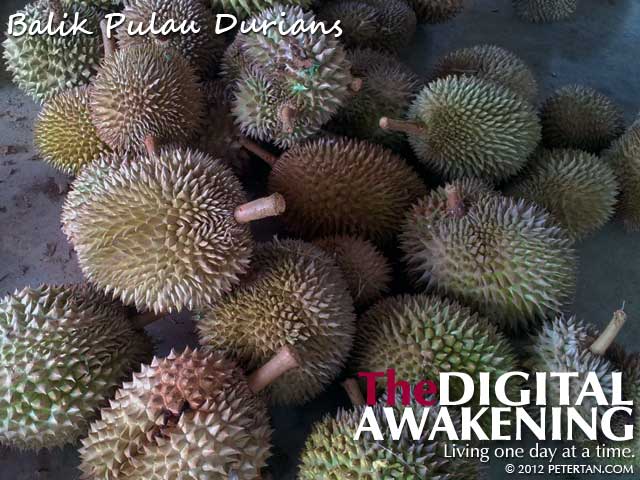
Freshly picked Balik Pulau durians.
The day after the spring cleaning, we headed to Balik Pulau. I had pre-ordered three durians for Wuan and myself from Ah Wong of Stall 808 which is across the road from the Balik Pulau bus terminal and market. Ah Wong is my cousin Peter’s cousin. He is a durian wholesaler that we have been patronising for many years. His wife also makes the delicious lempuk durian which is a paste of durian and sugar stirred in a kuali over a slow fire for at least four hours until it thickens and turns a dark shade of brown.
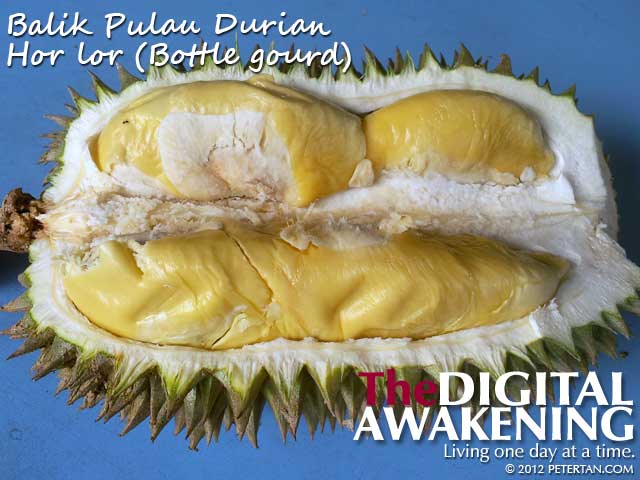
Balik Pulau durian – hor lor (bottle gourd).
When we arrived at Ah Wong’s house which also doubles up as his durian stall, we had to wait for him for almost half an hour. He was at the plantation collecting durians to transport them back to the stall. The first durian we had came fresh from the plantation. It is called “hor lor” in Hokkien which means bottle gourd because of the shape of its pulp. Its flesh is firm and pleasantly sweet with a subtle hint of bitterness.
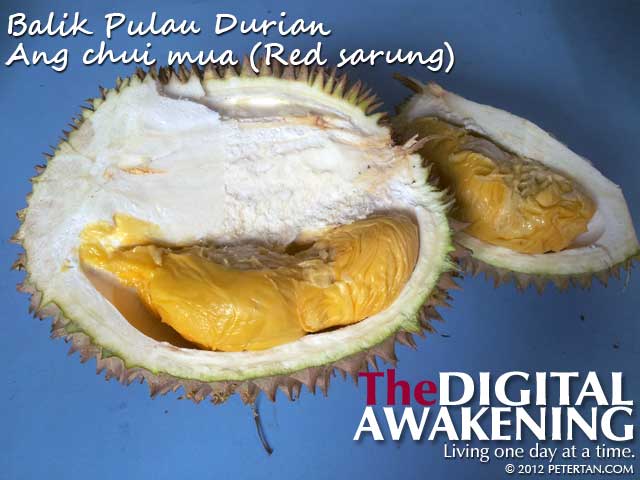
Balik Pulau durian – ang chui mua (red sarung).
The second fruit we had was called “ang chui mua” or red sarung. I have no idea why it is named as such. Perhaps the original tree was used to hang red sarungs to dry. Wuan and I have never eaten this fruit before. The flesh is a bright orange and slightly soft. Some of the seeds are stunted and small (chew hoot). It is sweet with a strong taste of bitterness. The core of the fruit is enlarged (tua sim) which made it difficult to open.
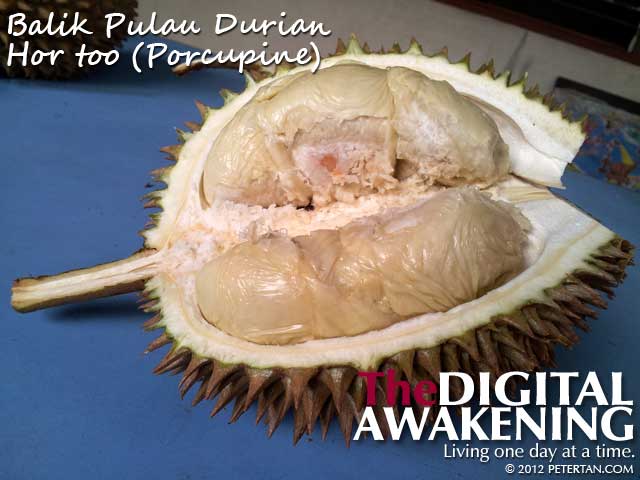
Balik Pulau durian – hor too (porcupine).
While we were enjoying the two durians, Ah Wong went off to collect more durians from the plantation. When we were done, and waiting for him, Wuan went over to the pile of durians to pick one of the smaller fruits to practice shaking the durian. The sound and sensation of the pulp moving inside while it is being shaken indicates that its flesh is firm. If there is no sound when shaken, the flesh could be mushed. Firm flesh is preferred over mushed ones.
When Ah Wong came back, he asked what kind of durian we wanted to eat next. Wuan wanted something creamy and bitter. Incidentally, the durian that she used to practice shaking with had bitter and creamy flesh. The durian was called “hor too” or porcupine. Again, I have no idea why it is named after a porcupine. Perhaps its shape has a likeness to a porcupine or the animal was spotted frequently near the tree before it was given a name.
Its flesh was pale, not an attractive feature in durians. The preferred colours are bright yellow, orange and pinkish. However, to our surprise, it was creamy and very sticky. It was moderately sweet but had a very bitter taste with a strong aftertaste of licorice. That was also the first time we had “hor too” and we liked it very much, irrespective of the colour of its flesh. Its unique licorice aftertaste was very unusual. That was one durian we would not mind having more of.
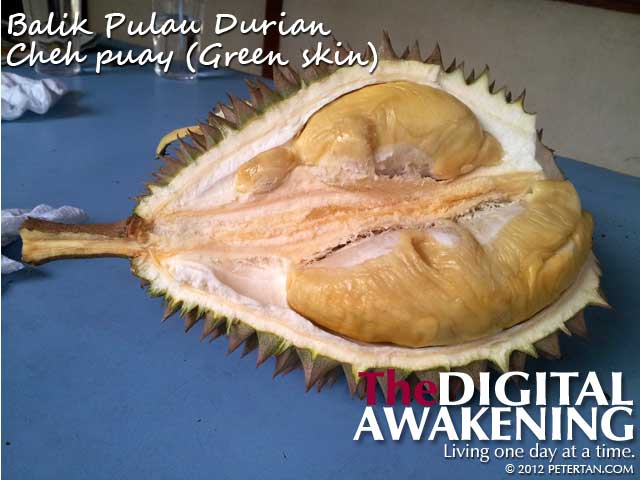
Balik Pulau durian – cheh puay (green skin).
With some room in our tummies still, we got Ah Wong to open another durian for us. He recommended “cheh puay” or green skin. This is one fruit we have been eating here for the past few years. Its flesh was a shade of bright yellow, very creamy, sweet, rich and sticky. I had to wash it down with some water after my second mouthful because of its stickiness. Needless to say, this is one of our favourites too.
The durian harvest for this year is rather small. The continuous rain during the blooming phase had caused many of the buds to fall off. In a week or two, the durian season in Balik Pulau will end. The quality of the durians at the tailend is usually lower. It was fortunate that we were in Penang at the peak of the season. We had a pick of some of the better durians. Finally, our craving for durians for this year was totally satiated.

